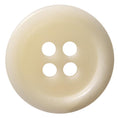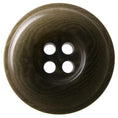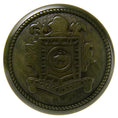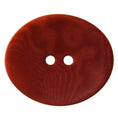- No products in the cart.








Phytelephas Macrocarpas
The name of this species derives from the Greek roots <phyton> and <elephas> meaning plant and elephant respectively, in reference to the very large size of both, the fruit and its seeds, and also in reference to the great similarity elephant ivory keeps with the whitish endosperm of these surprisingly versatile nuts. Other variations of Phytelephas are known to grow in the same regions where Macrocarpas do; however, their seeds behave in a less homogeneous way and dyeing result less consistent.
Phytelephas grow extensively in northwest South America, starting north of Peru, all throughout Ecuador and Colombia, and southern Panama. Their habitat is very well defined: they require sloppy terrain so that water “washes” the roots of the palm; altitude ranges from 250 m (800 ft) up to a little over 1000 m (3000 ft) above sea level, generally coastal mountain ranges (cerros); normally found in close interrelation with other forms of palms, trees and mid-size bushes (shady areas); dense colonies are found in the areas where hills collide and waterways form.
The fruit is large, about a full foot in diameter, mid to dark brown and completely covered with hard spikes. It is composed of cone-like clusters of seeds, each containing an average of 5 to 6 cavities which will eventually flood with a whitish fluid. Such fluid will consolidate into a very hard (endosperm) white substance, under the effect of a long and complex process involving recurring enzymatic activity.
Edible when still liquid and tasting like concentrated coco water, it has been reported to have a very strong diuretic effect and locals use the water as medicine for kidneys. The whole process from flower fertilization to ripeness take approximately 8 months, however, some variations take place according to climate conditions.
Tagua palms are dioecii, meaning they are sexually differentiated. Only female palms will produce fruits and only one male is needed for approximately one hundred females. A well documented study however, has established that phytelephas are actually hermaphrodite and according to climate conditions their population self-adjusts to the most convenient proportion of males and females. It is known that in times of intense drought, many females stop flowering and behave as males.
The nut has a void in the center, normally connected to the germination orifice and pretty much looks like a crack. It is formed by the change in volume at the time of hardening. The specific weight of Tagua is approximately 0.14 g/cc or 1.4 times that of tagua, therefore it sinks in water. Tagua is highly hygroscopic and its size slightly changes with climate conditions. When immersed in water, it will grow approximately 2% of its size in one hour soaking. Once it dries, it turns back to original size. Attention should be paid to excessive soaking as the material softens and under extremely long immersions (several days) it will corrupt and decay into cellulosic leftovers. This is one of the few characteristics that differentiate tagua from real ivory
Tagua can be elaborated into an endless number of beautiful items, as it stands most forms of mechanization. Can be cut, pressed, heated, burned, lasered, bleached, tinted and polished to extraordinarily bright finishes. Less porous than ivory, its final look can be brought to breathtaking results. Great for buttons and other accessories, as well as for fine jewelry and other applications.



